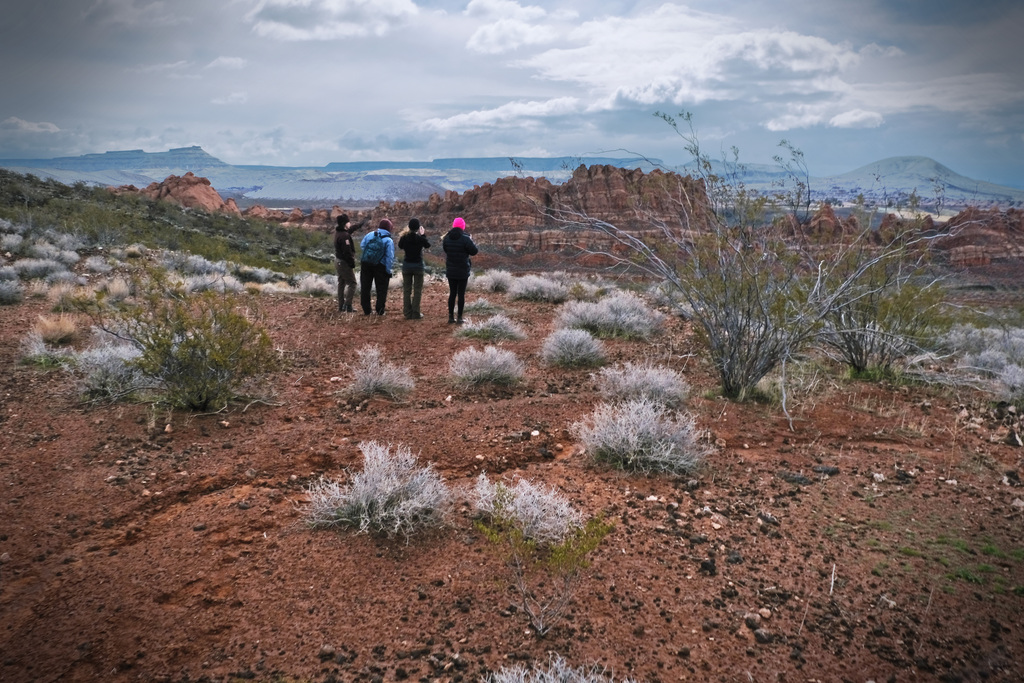It’s February in St. George, Utah, snow is on the mountains, and I’m hiking in tortoise country with about 40 other tortoise nerds. We’re here for the Desert Tortoise Council symposium, and early arrivers like me are rewarded with a field trip. Anne McLuckie is showing us the Red Cliffs Reserve, which marks the intersection of three great ecosystems: the Great Basin, the Mojave Desert, and the Colorado Plateau. We’re at the northern reach of the natural range of the Mojave Desert tortoise (Gopherus agassizii) and this land has been set aside to protect them and other rare desert animals and plants. McLuckie served as a wildlife biologist at the Utah Division of Wildlife Resources for nearly 30 years. Last year I had talked to McLuckie about a couple of desert tortoise questions, and she’s super smart, friendly, passionate, and helpful. It was awesome to finally meet her in person.

We followed a road through the red dirt, cut deep by erosion. The area was riddled with signs of tortoises, such as burrows and scat. But none of them were out. They emerge from winter hibernation after the soil has had time to warm up.



This area is also the site of a successful tortoise translocation program that McLuckie knows like the back of her hand. As human expansion — roads, houses, etc. — comes into contact with tortoise territory, something’s got to give. So tortoises are moved to a new home where they can thrive. Fortunately, the Red Cliffs area has been identified as excellent tortoise habitat and has become a designated recipient area for tortoises that had to be moved out of harm’s way.
Much of the desert here was still dormant, with ghost-like stems or the thinnest hint of green. But other wonders lay around our feet. A sharp-eyed geologist in the group pointed out dinosaur tracks exposed on an eroded slab.
Tomorrow the symposium will get serious: three days of learning and networking, ending with an awards ceremony.

